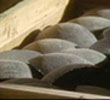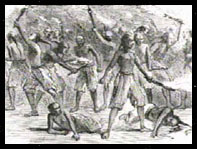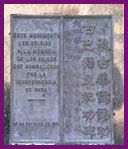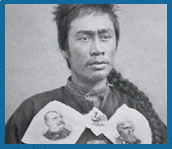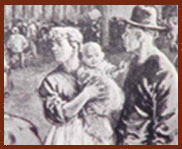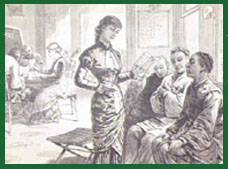2. The word assimilation historically, has had bad connotations because it often meant that immigrants were compelled to conform to the dominant culture by rejecting their own. More recently the look of assimilation is changing. A commentary in The Pasadena Star News, for example, states that "all Americans are in the throes of assimilation - whether straight assimilation, reverse assimilation, or full-blown mutation...."
Consider these views given by contemporary Asian-Americans. Which form of assimilation do they exemplify?
•"I just want my daughter to know what it’s like to be in an environment with Chinese people."
- A New York City professional woman who brings her child back to Chinatown for "Saturday" Chinese language schools.
• "We have been an integral part of American history. We helped to build this country with our blood, our sweat and our tears. Now, it is time for us to share in governing it."
- Gary Locke, Governor of the state of Washington.
• "We’re American first, Southern second"
- Filipina sisters, descendant of a sailor who jumped ship settling in Louisiana 200 years ago.
Think of your own personal observations or experiences that can illustrate other views of assimilation. (food, fashion, words, music, dance, multiethnic families, etc.).
1. $35,000 is the average payment to smugglers, called "Snake Heads," for the transportation of illegal Chinese immigrants to the United States. Revenues from smuggling Chinese to America run as high as $600 million a year. The trip can take four months with stays in Latin America, Russia or other countries. "Physical abuse, disease, and inadequate food or water kill some of these people.....They are locked [up] , handcuffed and beaten, sometimes raped."
[Joel L. Swerdlow New York’s Chinatown," National Geographic"August, 1998, pp. 62-77.]
Compare and contrast these facts with your impressions of the 19th century Coolie trade.
2. In the film we hear of the massacres against the Chinese who settled in the Spanish colonial Philippines. The success of the Chinese, who became the "backbone" of the Spanish colonial economy, was offered as one of the reasons for Spanish and indigenous fear of the Chinese community. Recently, ethnic Chinese in Indonesia, a minority who dominate the economy, have similarly, been attacked following the economic turmoil that stripped millions of Indonesians of their jobs.
Can you identify times in the history of the United States when the Chinese, or other people of color such as Native Americans, have been targeted in widespread violence? What motivated the violence against the groups you have identified? Was it economic? Was it their existence as an available group to scapegoat for actual or imagined crises? Was it racism or cultural misunderstandings between themselves and those who attacked them?
What can be done to prevent the occurrence of such events? How can the human rights of all groups in a culturally diverse society be protected?
3. Consider the population figures and places of origin presented in Coolies, Settlers, Sailors. Compare the facts about early Asian immigration with these contemporary facts:
• The term "Asian American" takes in 28 different Asian groups and 21 different Pacific Islander groups according to the definition established by the US Census Bureau.
• Between 1980 and 1990, the Asian-American population grew at a rate of 108.6 percent, from 3.5 million to 7.3 million.
• Asian-Americans do not share a single unifying language.
Given these facts consider:
• Obstacles to Asian-American unity as a voting bloc
• Asian-American economic potential
• Asian-American representations in the media
• Appropriateness of the inclusively of the term "Asian-American"
4. Where do today’s Americans of Asian origin, including recent immigrants, come from? What are some of the circumstances initiating their immigration? Which groups have been present for many generations?
5. Do all Americans define themselves as part of an ethnic group? What are the issues in a country that has people of many races, ethnicities, languages, and religions? How can community be created out of so much difference?

